Cash-investigation is a french TV-show about problemes & injustices in society.
In the episode of April 2022, they revealed some dirty tricks of the company McDonald for paying as low as possible their employee
The rule
In France, depending on the number of employees you have in your company, you have obligations ( for example, from 20 employees, you have to possese at least 6% of disabled people )
The one that interest us is
From 50 employees, you have to pay a prime of share to your employees
In the documentary, they showed that a lot of MacDonal's owner splitted their franchise in different companies in order to never cross this 49 employees
for example
Owner A have :
- Macdo 1 : 20 employees
- Macdo 2 : 40 employees
- Macdo 3 : 15 employees 75/49 employees
let's regroup them in new companies
Owner A have :
- Company A :
Macdo 1
Macdo 3
35/49 employees- Company B :
Macdo
40/49 employees
To proove that they had journalist that worked during 3 months by listing all Restaurant in phrase, fetching and crossing informations ...
Here is the reason of this article, could I help it with code ?
How to
the code you will see can't replace the work of journalists, but I do think this could be a cool tool to help speed the process.
what we need
We will need :
- the adresses of the stores
- check on google-map if they still exist ? (I saw one of the journalist doing this)
- get the company name of the restaurant
- the name of the director
- the number of employees
- the sales revenues to calcul how much Macdo saved by splitting his employees in different companies
how to get it
First thing was to look on official Macdo website, there is a map with all available restaurant.
Open the browser terminal in network tab, then click on any restaurant
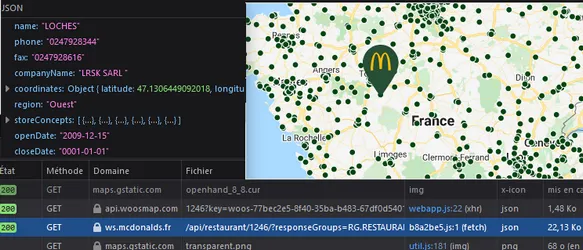 we found address ,company name & x y coordinates
we found address ,company name & x y coordinates
To fetch this API, we need the storeID. It seems that the map is built squares by squares
- load the png to show the point
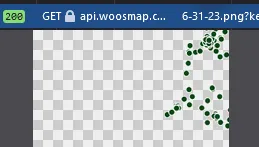
- load some Ids related to the points ... the store IDs !
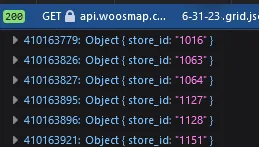
The more we zoom, the more we have restaurants. We will need to zoom on every squares otherwise we will miss some points. We can also see that
- the first number increment when we zoom
https:[...]4-x-x.grid.json?key=...
https:[...]5-x-x.grid.json?key=...
https:[...]6-x-x.grid.json?key=...
- the second increment on scrolling south
https:[...]x-29-x.grid.json?key=...
https:[...]x-30-x.grid.json?key=...
https:[...]x-31-x.grid.json?key=...
- the last increment on scrolling east
https:[...]x-x-22.grid.json?key=...
https:[...]x-x-23.grid.json?key=...
https:[...]x-x-24.grid.json?key=...
we will start our incrementation on the top-left of the France , and parse every grids until bottom right
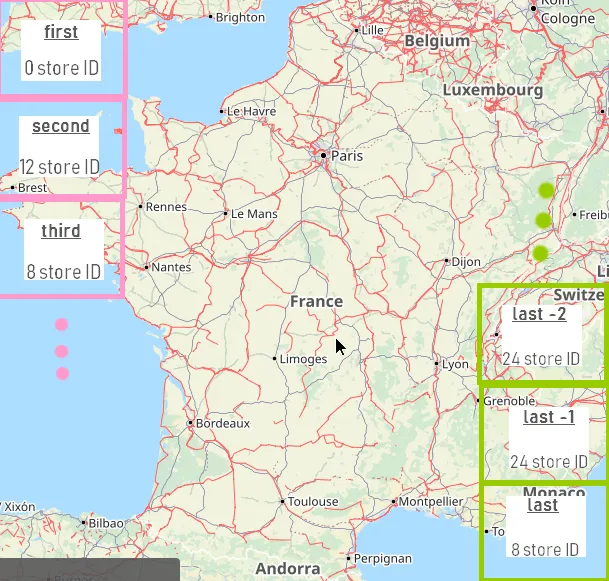
With the company name, after cleaning a bit, we can see on societe.com the missing informations
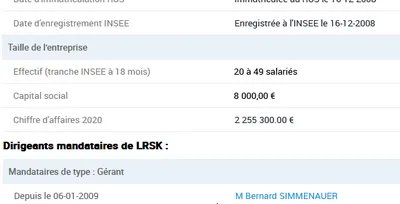
- owner
- how many salaries
- sales revenues
with a premium account we could even see all the other companies owned by the same person
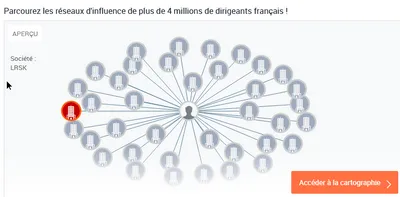
check google map
if you make a search on googlemap with the x,y you can easyly check the restaurant
"coordinates": {
"latitude": 48.215584,
"longitude": -4.051743291
},
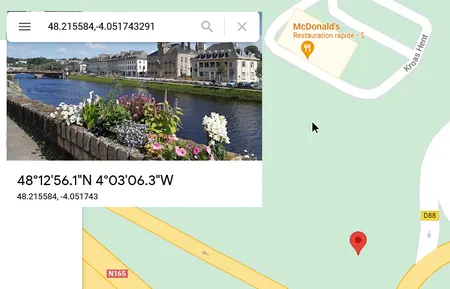
After getting all of this informations we should be capable of making the algo to check if the owner should have pay the tax !
get it ...
here is the code part, everything is on github If you are not interested in the code part, you can skip to the Conclusion
I exagerated the split on csv to explain the process
get all store ids
! I'm using a token that could be expired when you use the code, you can find a new one by checking the network tab mcdonalds and replace it in list_stores.go
I placed a time.sleep of 1 second to avoid too much calls ...
start the app
go run . list-stores
the output will be a csv file
store.csv
it should contain around 4000 ids
730
361
236
[...]
get stores informations
The app will load all ids from store.csv, and foreach, extract
- city
- company name
- x & y coordonates
- street
go run . info-stores
the output will be another csv file
info-stores.csv
should look like this
184,LYON VILLEFRANCHE SUR SAONE,FRAMI,45.998466;4.734668,Rue Berthelot VILLEFRANCHE SUR SAONE 69400
1659,BESANCON MARCHAUX A36 ORIGINALS AREAS,HOLDING,47.326909;6.126240,Aire de Besancon Marchaux MARCHAUX 25640
456,TOUQUES,R3,49.346960;0.096800,Chemin du Roy TOUQUES 14800
[...]
get companies informations
For this part there is no available API. We will have to use web-scrapping to extract the informations. We use go-colly
the last output is
info-company.csv
should look like this
[...]Restauration,20 � 49 salari�s,M Olivier BURNIAUX
[...]Services,,M Laurent COYON
[...]Restauration,20 � 49 salari�s,M Bruno PIGE
Conclusion
Now we have the csv, you can apply the same filters on excel we saw in the documentaries, or even make the algo on golang part ! The cool part is once you have the working code, you can repeat it as much as you want . Next year we could check if Macdonald's stoped his tricks (spoiler alert: They won't)